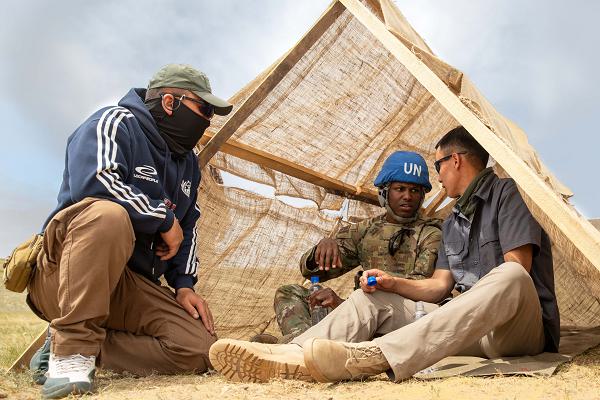
Five Hills Training Area, Mongolia. (June 16, 2025): They are descendants of a warrior culture that conquered the known world in 1223 A.D. In this photo by Army Staff Sergeant Christopher Stelter, 1st Lieutenant Davonta Vaughn and interpreter Fa Ganbaatar speak to Mongolian Armed Forces Staff Sgt. Dadaasuren Tumen Ulzii during foot patrol training. The Americans are participating in Khaan Quest, an annual exercise designed to promote regional peace and security. The U.S. is working with Mongolia to foster stronger democratic institutions, including supporting citizen participation, and promoting a more market-driven economy.
The warrior spirit of the people of Mongolia is legendary. In 1206, Genghis Khan was able to unite the various Mongol tribes into a fighting force that terrorized their enemies. Today, the Mongolian armed forces consist of three branches, a ground force, a construction and engineering unit, and special forces. The current ground component has roughly five hundred tanks, 650 infantry fighting vehicles, and over five hundred mobile air defense systems. Most of them are old Soviet Union models designed between the late 1950s to early 1980s. Instead of heavy combat, its mission is focused on peacekeeping operations and humanitarian assistance.
This year marks the 22nd iteration of Khaan Quest with over 1,200 participants from sixty-seven different countries. The event featured both command post and field training exercises including realistic scenario-based training concentrated on peacekeeping operations involving host nation partners. Besides the training events, participants were encouraged to partake in numerous cultural events to forge closer relationships between participating nations and Mongolia.
Fortunately, a recent survey found that 82% of Mongolians have a favorable view of the United States, a good thing coming from the descendants of the most fearsome warriors in history.


